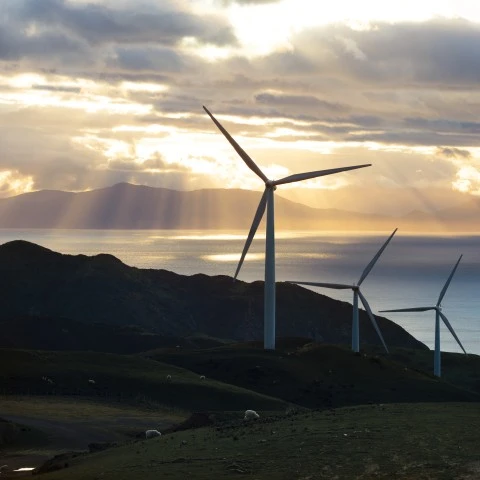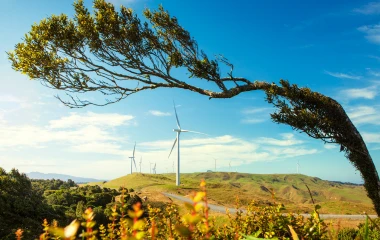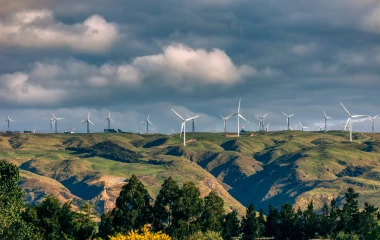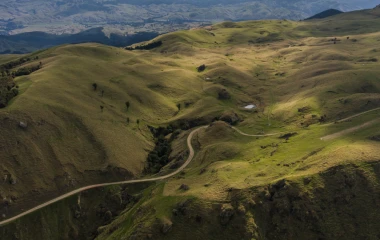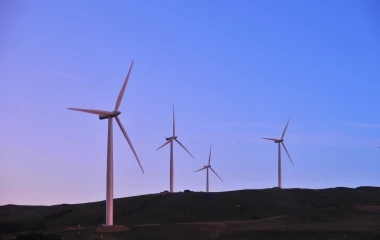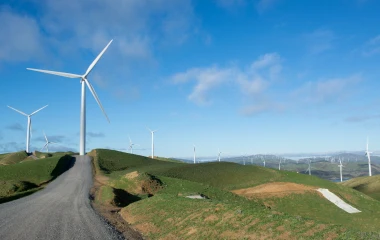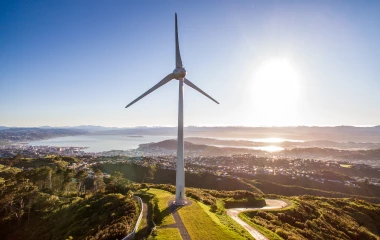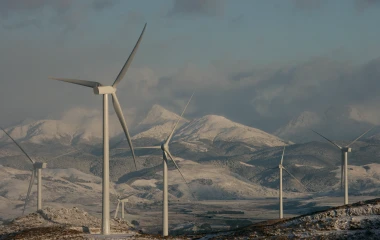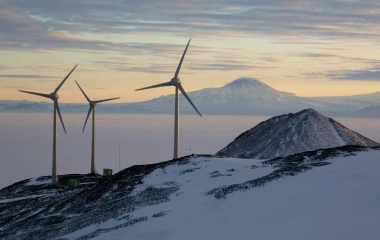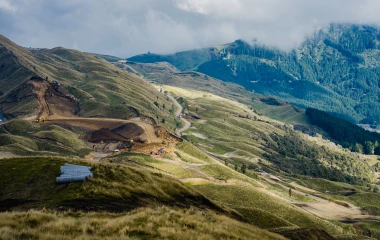Wind farms are made up of lots of individual wind turbines. To make electricity, the turbines need to face the wind. On top of the turbine cover, known as the nacelle, sits an anemometer and a wind vane. These judge how the turbine should be positioned, so when the wind changes direction, motors turn the nacelle and blades to face into it.
The blades catch the energy in the wind, which generates lift, creating a turning force. As the blades rotate, they spin a shaft inside the nacelle, which goes into the gearbox connected to a generator. The generator converts the rotational energy into electrical energy.
The electricity then flows through cables into a transformer, and then to the wind farm’s substation, where it’s converted to the right voltage for the grid or local network.
The amount of electricity generated by a wind turbine depends on how hard the wind is blowing. In storms, wind turbines stop operating to protect themselves from extremely high winds.
The electrical capacity of large turbines range in size from 50 to 5,000 kilowatts. Single small turbines, with capacity below 50 kilowatts, are used for individual homes, telecommunications dishes and water pumps.
